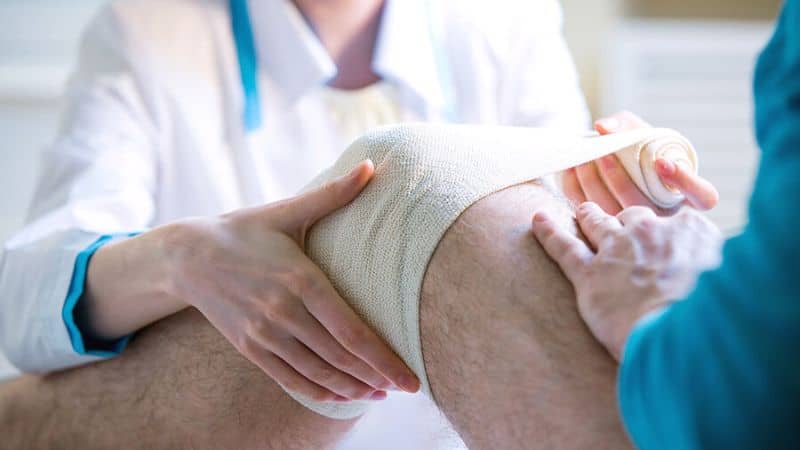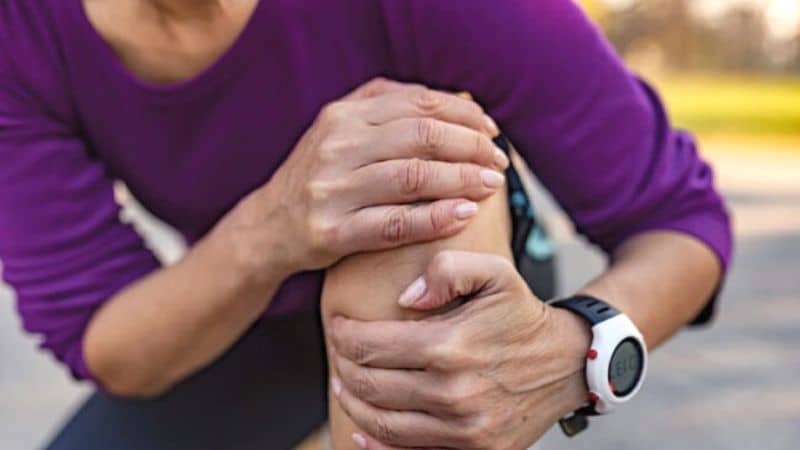Here in this blog, find out about Anterior Cruciate Ligament Tears symptoms, treatment, and preventions.
Anterior Cruciate Ligament is a major ligament that assists in the functioning of your knee joint.
Further, it also connects your thighbone (femur) to your shinbone (tibia).
However, ACL tissues are prone to injuries for people active in physical activity and sports.
ACL injuries are tears of the anterior cruciate ligament.
These injuries are very painful and can disable a person for a few weeks to several months and in severe cases even for a lifetime.
If you are suffering from ACL injury then, seek immediate help as it gets worse with time. If you are a resident of North Bihar, then reach out to Dr. Ramakant Kumar who is the best Ligament Surgeon in Patna with years of experience.
In today’s blog on Anterior Cruciate Ligament Tears, we will let you through some important pieces of information that can certainly help you.
Let’s get started…
What are Anterior Cruciate Ligament Tears?
Ligament injuries are “sprains” and measured on a scale of 1 to 3, where grade 3 sprains are the most severe.
Here’s a bit more about acl sprain.
Grade 1 Sprain
When your ACL gets stretched and damaged, but still functions and provides support, and keeps the knee stable.
Grade 2 Sprain
Basically, it occurs when your Anterior Cruciate Ligament loses due to stretching to an extreme level, this is also referred to as partial tear or sectional tear of the ligaments and is very rare.
Grade 3 Sprain
It is best defined as the breaking of the ACL into two parts and these sprains are the complete tear of the ligament and lead to the unstable knee joint.
Most ligament injuries are complete tears or near-complete tears, partial or sectional tears are very rare.
Now that you know a bit about ACL types, let’s move further to what may have caused Anterior Cruciate Ligament Tears in you.
Reasons for ACL Tears and Injuries
There are various ways in which a person can injure or tear Anterior Cruciate Ligament.
Different physical conditions can also play a vital role in getting ligament injuries.
Here are some more reasons for ACL injury.
- Sudden change in direction while running
- Stopping with your legs
- Jumping on the feet and shocking the knee joint
- Collision or contact with moving objects
So these were some major causes of Anterior Cruciate Ligament Tears. Let’s now move forward to know about its symptoms.
What is the Anterior Cruciate Ligament Tears Symptoms?
Whenever you tear or injure your (ACL) or ligament, you can sense a snap at your knee joint.
In addition, you may also feel that your leg under your knee is no more stable.
Various other symptoms of Acl injuries are-
- Swelling and pain – Once you injure or tear your ACL, pains immediately and within a few hours your knee will swell.
- Motion – Range of motion gets restricted, and if you try to go back to normal activity it can damage your knee.
- Discomfort – If your ACL tears still you can feel little pain and discomfort in daily activities like walking, squatting, etc.
If you’re experiencing any of these, it is always recommended to consult your healthcare professional.
He will suggest treatments according to your injury’s nature and its extent.
Treatment for Anterior Cruciate Ligament Tears

In general, the treatment of ACL Anterior Cruciate Ligament tears or injuries is done in two different methods depending on the needs of the patients.
For an active athlete, the doctors may recommend a safer surgical treatment. Whereas an elderly or less active person can opt for non-surgical treatment.
Surgical Treatment– Surgeons use Arthroscopy for surgery on torn ligaments with small cuts and incisions.
These surgeries are less protruding and have many benefits like relatively low pain after surgery, less time spent in bed, and the recovery time is also faster.
Non-surgical Treatment– A torn ACL cannot recover without surgery. Doctors recommend acl tear treatment without surgery as it is effective for patients who are elderly or less active, only if the stability of the knee joint is proper.
Note: If you need any kind of treatment related to bones and ligaments in Bihar, then consider going for Dr. Ramakant Kumar who is the finest Orthopedics Doctor in Patna.
Once the swelling reduces, your physician will start a recovery program.
Specific exercises, knee movements, and therapies are the recovery program to restore the strength of leg muscles.
These support the knee joint and help in a full range of motion for your knee.
After surgical treatment, a physical recovery program must focus on retracting full range motion of the joint and strength of the muscle and ligament surrounding it.
Followed by designed physical therapies to protect the injured ligament.
The final stage of rehabilitation is to return to the full functionality of the patient as per their daily lives.
How to Prevent ACL Tears or Injuries?
There are various training techniques to reduce the chances of ACL injuries.
However, the complete prevention of ACL tears is not possible.
You should always be mindful of two important things…the way you change your direction, cut speed, and speed up.
In addition, you should always land on your toes and let your ankle and calf muscles reduce the load on the knee joint.
Conclusion
ACL injuries are the tears anterior cruciate ligament. It mainly occurs in older age people and sports athletes.
Also, it’s always advisable to visit a professional for the best medical support. Consider visiting the best Arthroscopy Doctor in Patna, Dr. Ramakant Kumar.
Talking about the acl injury recovery time…patients can walk a short distance without any help within 3-4 weeks.
However, regular walking or jogging takes 10 to 12 weeks depending on the severity of the injury and the patient physical conditions.
Hopefully, you have found this blog on Anterior Cruciate Ligament Tears helpful and informative.
